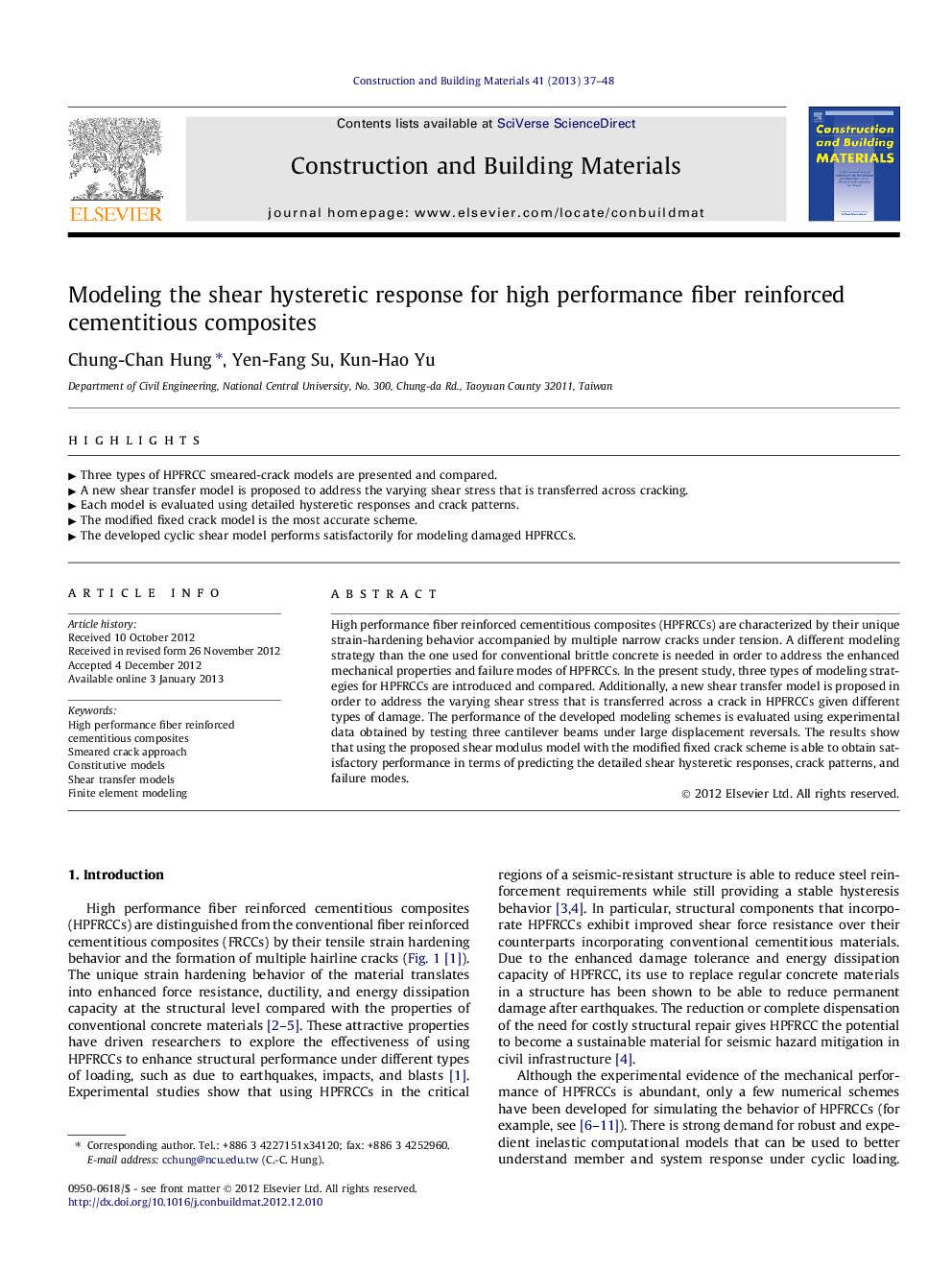| Article ID | Journal | Published Year | Pages | File Type |
|---|---|---|---|---|
| 258371 | Construction and Building Materials | 2013 | 12 Pages |
High performance fiber reinforced cementitious composites (HPFRCCs) are characterized by their unique strain-hardening behavior accompanied by multiple narrow cracks under tension. A different modeling strategy than the one used for conventional brittle concrete is needed in order to address the enhanced mechanical properties and failure modes of HPFRCCs. In the present study, three types of modeling strategies for HPFRCCs are introduced and compared. Additionally, a new shear transfer model is proposed in order to address the varying shear stress that is transferred across a crack in HPFRCCs given different types of damage. The performance of the developed modeling schemes is evaluated using experimental data obtained by testing three cantilever beams under large displacement reversals. The results show that using the proposed shear modulus model with the modified fixed crack scheme is able to obtain satisfactory performance in terms of predicting the detailed shear hysteretic responses, crack patterns, and failure modes.
► Three types of HPFRCC smeared-crack models are presented and compared. ► A new shear transfer model is proposed to address the varying shear stress that is transferred across cracking. ► Each model is evaluated using detailed hysteretic responses and crack patterns. ► The modified fixed crack model is the most accurate scheme. ► The developed cyclic shear model performs satisfactorily for modeling damaged HPFRCCs.
